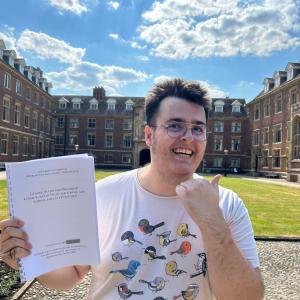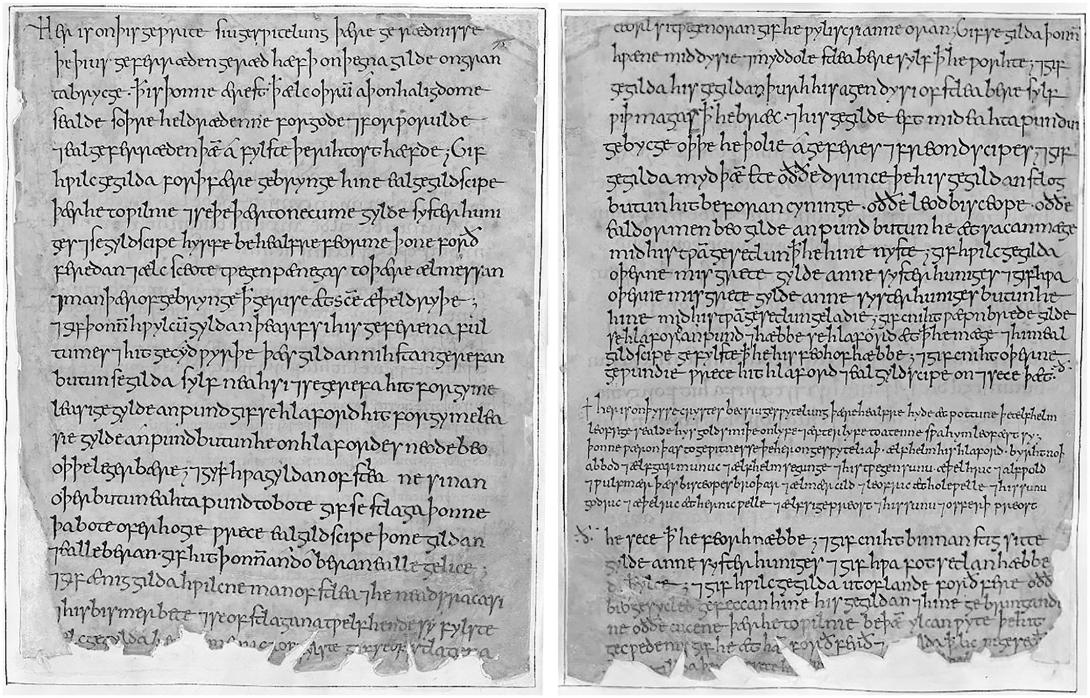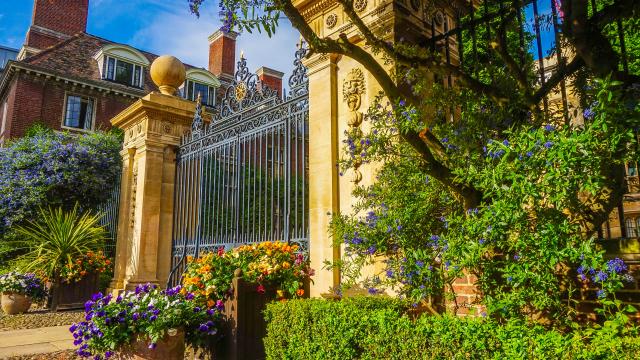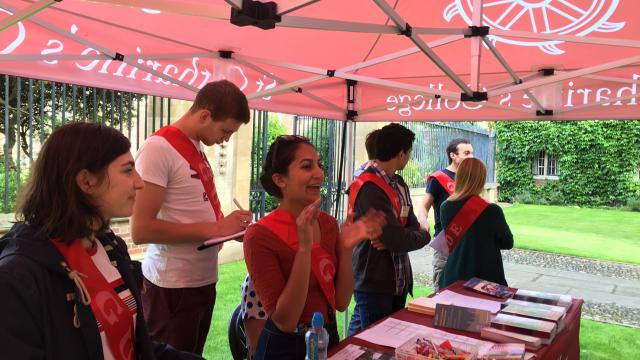
The following article has been published as part of a series celebrating 550 years since St Catharine’s was founded in 1473.
During the course of our 550th anniversary celebrations, the St Catharine’s community is encouraged to reflect on our historical inheritance and the successive generations since 1473 who have shaped the College that we know today. However, there is also much to learn from historical events before 1473.
To explore Cambridge's early history – and indeed the 550 years before St Catharine’s was even founded – we caught up with Kit Treadwell (2019, Anglo-Saxon, Norse & Celtic), who has returned to St Catharine’s for an MPhil looking at gender, status and friendship in 14th-century Welsh and Middle English literature.
How would you summarise Cambridge's early development?
"Cambridge as a settlement has existed since the Iron Age –and perhaps older. It was known by at least three names before Cambridge stuck; the Romans called it Duroliponte (a fort which occupied what is now Castle Hill), the native British name survives in the modern Welsh Caergrawnt, and the first English name was Grantebrycge. To understand why the location was so important, we need to realign our understanding of geography. Before the early modern period, road travel was by and large slower than waterborne. This is especially important for Cambridge, which was easily accessible by water before the draining of the Fens. Sitting at the intersection of continental connections (parts of East Anglia are closer to the Netherlands than they are to London), and at the bottom of the Fens, Cambridge first emerged as a trade centre. By 923, it had benefitted from being inserted into the Viking trading network, and trade was booming as the natural landing point for ships sailing as far inland as possible."
Are there any aspects of Cambridge's early history that you find particularly interesting?
"One of my academic interests is the interconnected nature of the early medieval world. It's easy to imagine pre-modern England as isolated, but that's far from the case. Cambridge was attached to the abbey at Ely, which – at least from its refoundation in 970 – was part of a western European Benedictine reform movement and second only to Glastonbury within England. I think it's really important to remember that Cambridge has always been home to people from all over the world; from across the Roman Empire, connected in Viking trade routes spanning Canada to Azerbaijan, and constantly in contact with European peers."
What aspects of Cambridge as a settlement would be recognisable in 923 for someone in 1473? And us today?
"In 923, Cambridge was recovering from two decades of rapid change. The Danelaw – Norse overlordship of parts of England – dissolved its control in 917, when we are told by the Anglo-Saxon Chronicle that 'many people who had been under the rule of the Danes both in East Anglia and in Essex submitted to [King Edward]... and the army which belonged to Cambridge chose him especially as its lord and protector'.
"This would be no surprise to a resident in 1473; only two years prior, Edward IV had dethroned Henry VI after a 1470 revolt. King's College – our neighbours and home to our founder Robert Woodlark for many years – had been founded by Henry, and one might imagine that Woodlark had to similarly reassess his priorities for a new ruler.
"While this may be hard for a modern person to imagine, some things absolutely would be the same throughout most of Cambridge’s history: the tower of St Bene't's Church, the oldest in Cambridgeshire, was likely built around 1000, and it was during restructuring around the early tenth century that the centre of the settlement shifted from Castle Hill towards the east bank of the Cam (or, of course, the Granta)."
What aspects of life in Cambridge would be recognisable in 923 for someone in 1473? And us today?
"As there were no colleges in Cambridge – and indeed no universities in Europe – in 923, both Woodlark and us ourselves might be surprised by the structure of Cambridge's communities. Indeed, given that 923 falls between the end of the earliest religious community at Ely and its refoundation, the most important centre for scholarship in the region would be inaccessible. However, we can use later evidence to reconstruct elements of society. One of only five early medieval guild statutes surviving in England is from Cambridge. Such guilds were made up of the higher echelons of society, and the text is full of things we would find unfamiliar. They regulate blood-feuds, funeral provisions, and insults. Yet there is a touching sense of solidarity – 'if any guild-brother... outside the district... is taken ill, his guild-brothers are to fetch him and bring him... to where he wishes'. And are there any echoes of tardy students in the requirement that 'the guild-brother who does not attend his morning conference is to pay his sester of honey'? I'll leave it to you to decide."
Why was Cambridge an attractive location for a scholarly community?
"Sadly, attractive may slightly overstate the circumstances of the University of Cambridge's founding. Much to our chagrin, Cambridge's foundation owes a great deal to circumstance – it was created by scholars fleeing Oxford in 1209 after a series of disputes between the town and the university. What drew them to Cambridge in particular depends on who you ask. It is absolutely possible that Ely's ecclesiastical reputation for scholarship was in mind, but it is equally possible that it was just far enough away from their alma mater to feel safe. By 1473, scholarship was thriving in Cambridge and Woodlark's ties to King's made it unlikely he would go any further afield. After all, he bought land directly next door."
Are there any interesting references to Cambridge in the texts you have studied?
"The guild statutes are perhaps my favourite Cambridge-based historical source, and there are plenty of mentions in the Anglo-Saxon Chronicle too. I am particularly partial, though, to another source. My Master's thesis is investigating the Arthur legend across England and Wales; the earliest attestation of Arthur by name is in a text called the Historia Brittonum, ascribed to Nennius. It dates from around 828 in Wales. The seventh chapter – following a historiographical tradition of beginning works with a geographical overview – lists the twenty-eight cities of Britain; the 17th is 'Cair Grauth'. We cannot be exactly sure what this refers to, but it looks an awful lot like Caer Grant, 'the Castle at the Granta River'. Strangely, there is no mention of Oxford."






